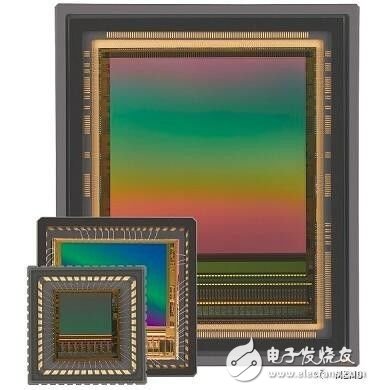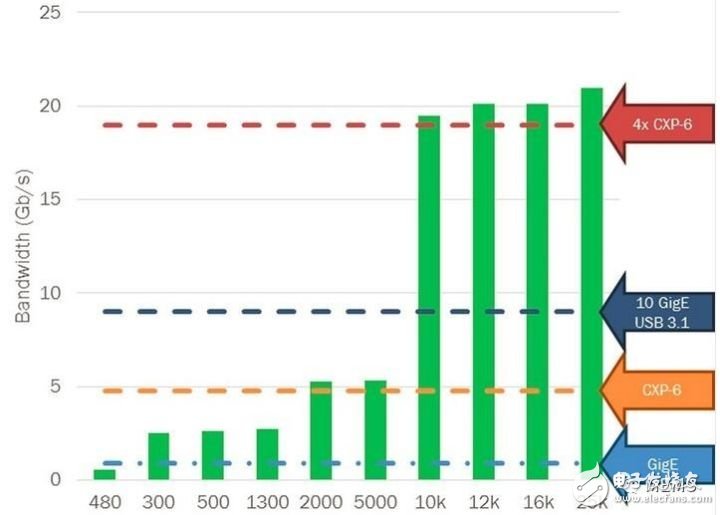Industrial Imaging is a growing market that covers applications from inspection, robotics, high-end surveillance, smart transportation systems and scientific research. While customers of these applications recognize that they need a "high performance" imaging system, the different needs represented by different applications mean that specific imaging will vary greatly depending on the application. Sometimes, "high performance" can mean high-definition images that capture high-definition frame rates—getting millions of pixels above 50, 100, or 200 frames per second. But sometimes different performance characteristics may be more important, such as small-volume cameras, enhanced light sensitivity (visible or near-infrared), color fidelity, customization, and more. Due to the breadth of applications, there is no single imaging solution that can effectively meet all needs. Camera manufacturers need to provide a range of different cameras with different resolutions, picture playback rates, light sensitivity, output interfaces, etc., to provide more efficient market for this market. service. Considering competitiveness, it must be cost-effective development, support fast and efficient design and manufacturing, and can be used in multiple camera models. Image sensor manufacturers can develop a range of integrated high-performance image sensors to simplify the development of such camera combinations based on a common image sensor architecture with a range of resolution and configuration options. With such a platform, camera manufacturers can leverage a single camera design to support the entire range of image sensors. Examples of such image sensor platform designs can be found in ON Semiconductor's PYTHON series of global shutter CMOS image sensors. Because the VGA, 500 megapixel, and 1.3 megapixel members of the series have the same package of the same pin definition and electrical connections, it is easy to design a single camera that supports all three components. Similarly, a design can support both the 2 million and 5 million pixel series of the series. But in fact, because the LCC package that supports these two components can be used, the deployment of the two boards can be combined. This supports the use of a single board layout, from VGA to 5 megapixel components.

PYTHON's global shutter CMOS image sensor adds a second board design to the μPGA high-definition sensor. The nine resolutions of the series—36 expandable cameras for black and white, color, and enhanced near-infrared (NIR) configurations—can Use only two printed circuit boards. The commonality of this design greatly simplifies the work of camera manufacturers developing camera options for a wide range of industrial imaging applications, reducing costs and accelerating the launch of new camera designs. Of course, even if there is mutual compatibility, the actual imaging performance of the component must meet the target application requirements. The latest CMOS design and manufacturing techniques are required to enable global shutter imaging to capture moving objects without moving artifacts while preserving the high sensitivity and low noise required for final image integrity under reduced illumination conditions. Ideally, image acquisition will span a wide range of different wavelengths, including enhanced near-infrared sensitivity design for long-wavelength light (eg, 850 nm or more) detection applications. Data bandwidth is also a key performance parameter because end users not only have to optimize the picture playback rate for the application, but also try to take advantage of the established camera interface. For example, 10Gig Ethernet interfaces, USB 3.1, and CoaXPress are now widely adopted, and image sensor platforms that meet or exceed these interface bandwidths provide further flexibility in the deployment of camera manufacturers and end-user imaging systems. A good example of this type of image sensor design is the PYTHON component, which has 32 independent high-speed low-voltage differential signaling (LVDS) output channels. Achieve 20 gigabits of data transfer per second—higher than the effective bandwidth of interfaces such as USB 3.1 or 10 Gig Ethernet. In addition, the actual picture playback rate of the series of components can be increased by simply reading a portion of the imaging array (region of interest or ROI) as needed. These sensors support up to 32 independent ROIs, and the picture-to-picture configurability simplifies monitoring or tracking as the movement of a person or object across the camera's full field of view. Depending on the needs, the PYTHON 25k can read a 1080p resolution window at over 400fps, which is twice the PYTHON 2000 playback rate with the same 1080p resolution.

The bandwidth of the PYTHON component really needs to significantly improve the design capabilities of the image sensor series platform, requiring multiple product configurations—such as the PYTHON series of 65 different orderable components—the camera manufacturer can choose the sharpness, color configuration, and power of the target application accordingly. Requirements, output speed, package configuration. Then, you need to have multiple support options to help with sensor evaluation, and it can be used as a reference when making new designs. Before starting a new design, the detailed data sheet has information on component performance, and the evaluation kit can evaluate the complete performance of the image sensor on site. Once the design begins, these same documents and tools can be used as a reference to help with debugging and optimization to ensure optimal performance of the new camera design. As business imaging applications are likely to proliferate, the use of a platform design—camera design and manufacturing, and the included image sensor—to provide the multi-imaging options required for the application becomes even more important. By leveraging the full range of image sensors in a variety of configurations and definitions, camera manufacturers can simplify development, design, and support a full range of cameras to deliver the critical imaging performance customers demand.
Wholesale 128GB 256GB 500GB 512GB 120g 1TB flash drive usb ssd M.2 PCIe NVMe hard drive gen3 x 4 2280 hard disk SSD.
* 256GB = approximately 240GB -244GB
* 512GB = approximately 480GB -488GB
M.2 NVME PCIE SSD Fasr response performance Improvement
READ SPEED MAX UP TO 2400MB/S
WRITE SPEED MAX UP T0 1700MB/S
* 128GB = approximately 120GB -122GB
Internal Hard Drives,Solid State Disk,Fast dispatch,ssd M.2 PCIe NVMe hard drive
MICROBITS TECHNOLOGY LIMITED , https://www.hkmicrobits.com
